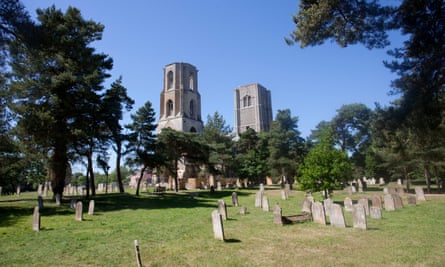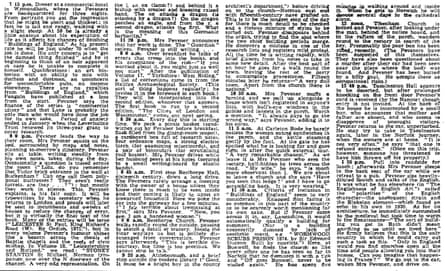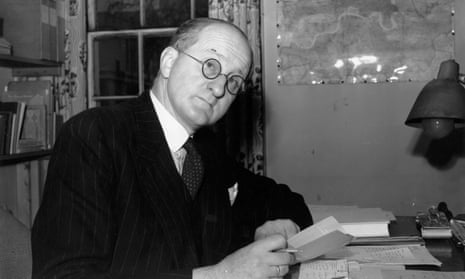One night this week, in a bedroom of some hotel in Norwich, one of the great works of English scholarship will be halfway to completion. There, probably about midnight, Dr Nikolaus Pevsner will finish the text of the twenty-third volume in his Buildings of England series. Next day he will leave Norfolk for the first time in nearly five weeks.
It is a matter for astonishment that a German who visited England for the first time at the age of 28 should, almost single-handed, be writing a commentary on every notable building in this country. Even more remarkable is the pace at which he is doing it. And when it is considered that Dr Pevsner conducts this career simultaneously with four others – head of the Department of the History of Art at Birkbeck College, editor of the fifty-volume Penguin History of Art, executive editor of Architectural Review, British Council lecturer abroad – amazement can go no farther.
Buildings of England, however, occupies more than 50 per cent of his time. It was conceived at a Sunday lunch in the late forties between Pevsner and Allen Lane, the publisher of Penguin books. Lane asked Pevsner what he would most like to do if he had a free hand and financial backing. Pevsner’s answer was ready. He was told to go ahead.
The first two volumes, on Cornwall and Nottinghamshire, were published in July, 1951, and the eighteen books now available have appeared regularly, about twice a year, ever since. There is no particular geographical sequence of publication; Pevsner, in fact, leaves choice of county to the two assistants who do preliminary research into each before he and his wife explore it. At the moment, while he is surveying and writing about Norfolk, Buckinghamshire is on the verge of publication, Suffolk, Surrey, and Northamptonshire are in varying stages of printing or preparation for the press, and research is being undertaken into Herefordshire (for the Pevsners’ autumn field work) and Wiltshire.

Pevsner himself says that the most important work is done by the two assistants, who each select one county and sweat over it for a year. In that time they compile a list of every building known to be of architectural value, from every reliable source – Ministry lists of scheduled buildings, Victorian county histories, National Buildings Record, &c. With this background information the Pevsners take the field.
In preparing each volume they average something like 2,000 miles by car, each trip lasts anything from four to six weeks, and they make two a year. Their touring day begins about 7 am and ends somewhere round midnight.
This is the timetable of a part of one of them:

The pace of the afternoon was as hectic as that of the morning. But at 5 20 pm, as Pevsner returned from a skirmish round the grounds of a Georgian country house, he took a cigarette from his case and Mrs Pevsner said “That means we’ve finished.” It was not the end of the day’s labours, however. Pevsner put in a good hour’s writing before dinner and they both worked on afterwards as they had done the night before. Next morning Pevsner was ten minutes late for breakfast. He had been walking round Wymondham, and taking note of its buildings, since 7 22 am (this stopwatch precision in timing is his, not mine). Mrs Pevsner, meanwhile, had been washing clothes in their room.
At the end of this week they will return to their Victorian terrace house (“It’s awful,” according to Mrs Pevsner, “but it has a magnificent view across Hampstead Heath”) and to their “normal” way of life. The word is used relatively. It means Saturday and Sunday afternoons and perhaps a couple of nights a week free of work, the resumption of the four other careers and the continuation of this one, the preparation of a summer lecture tour of South America, and the planning of an autumn excursion into Herefordshire. It will go on like this until the last of the Buildings of England. After that presumably, the inexhaustible Pevsner will tackle Scotland, Ireland, and Wales.

Comments (…)
Sign in or create your Guardian account to join the discussion